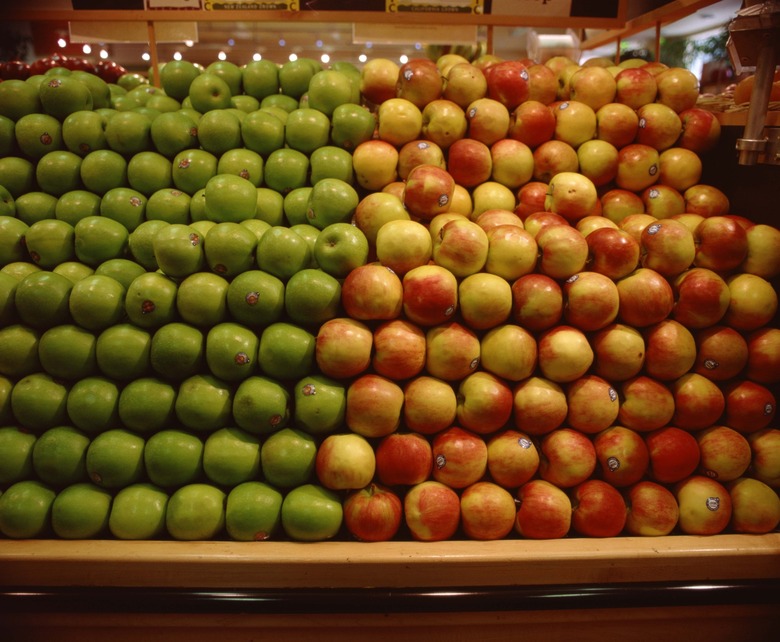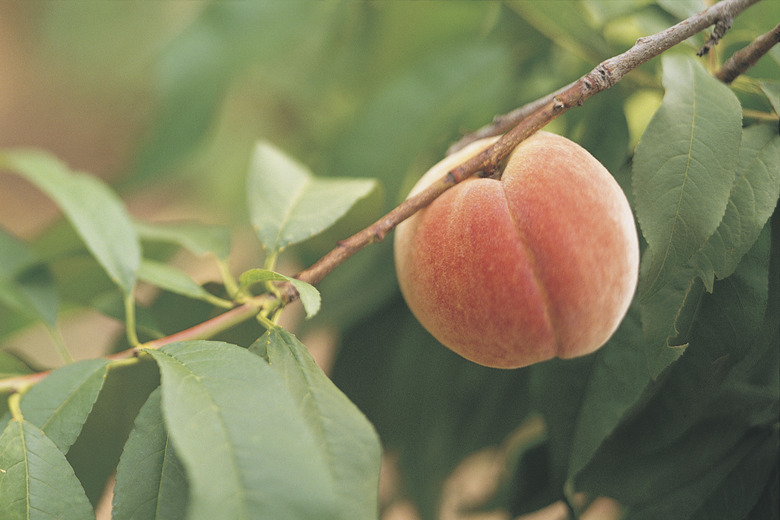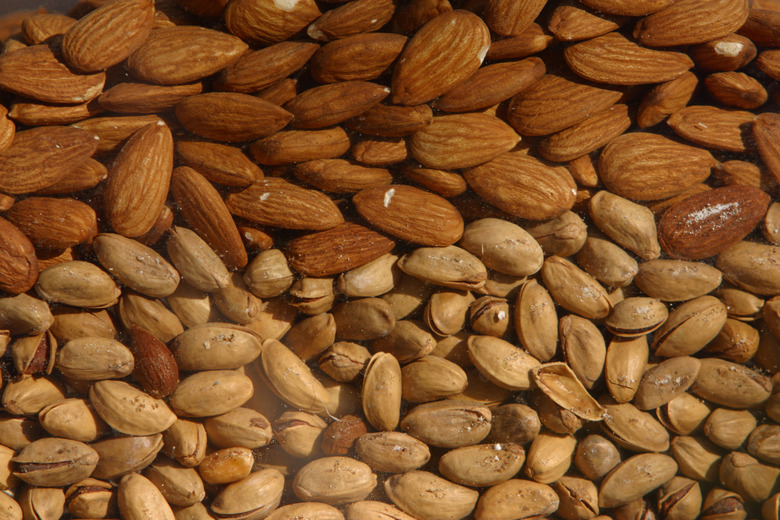Most Profitable Fruit & Nut Trees
When attempting to plant fruits and nuts for profitability, the two most important factors to consider are the market value of the fruit (or its popularity) and the climatic conditions in the region, which must support optimal growth of the selected trees. Fruit and nut trees that are grown with profitability in mind require regular training and pruning, regular pest and disease control, and protection from frost.
Step 1
Apples are easy to grow and are grown in all 50 states of the U.S. Successful production can be achieved by selecting the right apple variety and proper planting site selection. Apple trees are not self-fertile and require a pollinator of another variety for pollination. Some popular apple varieties that are good for eating fresh or cooking include Gala, Empire, Jonagold, Red Delicious, Golden Delicious, Rome and Fuji. The Red Delicious is the most grown apple variety in the country. About 2,500 apple varieties are grown in the United States, of which 100 varieties are grown commercially in 36 states. The average size of an apple orchard in the United States is about 50 acres and the fruit is the second most valuable fruit in the country after oranges. The total apple production in the country during 2005 was 234.9 million cartons with an estimated value of $1.9 billion.
Step 2
- Apples are easy to grow and are grown in all 50 states of the U.S.
- Successful production can be achieved by selecting the right apple variety and proper planting site selection.
- The average size of an apple orchard in the United States is about 50 acres and the fruit is the second most valuable fruit in the country after oranges.
Peaches
Step 1
Peaches are the third most popular fruit in the U.S., which supplies 25 percent of the world's fresh peaches. Peaches are commercially grown in 29 states; the U.S. peach crop in 2004 was valued at $461 million. This makes peaches the fourth most valuable non-citrus fruit after grapes, apples and strawberries. California, South Carolina and Georgia are the three peach-producing states, and the United States is among the world's four largest peach exporting countries. Peach trees need careful monitoring, as they are susceptible to diseases and pests. The best peaches for home growers with the intent of profitability are the bud-hardy varieties, in which the blooms are resistant to the late spring frosts and trees are relatively more resistant to diseases and pests. Peach trees are self-fertile and do not need a pollinator. Some recommended varieties include Garnet Beauty, Harken, Reliance, Harmony, Madison, Redskin, White Hale and Glohaven. Peaches grow very well in all regions up to USDA Zone 6. The trees don't produce prolifically in the warmer, tropical regions since there is not enough cold to promote ample fruit production.
Step 2
- Peaches are the third most popular fruit in the U.S., which supplies 25 percent of the world's fresh peaches.
- The best peaches for home growers with the intent of profitability are the bud-hardy varieties, in which the blooms are resistant to the late spring frosts and trees are relatively more resistant to diseases and pests.
Almonds
Step 1
According to the National Agricultural Statistical Service almond is the largest fruit and nut crop in the United States accounting for 48 percent of the entire world almond trade. Almonds are commercially grown only in California and the state produces over 30 varieties of almonds. Over two-thirds of California-grown almonds are exported to over 90 countries, and the U.S. almond export value was nearly $1.3 billion in 2004. Almond trees grow best in areas with hot summers and cool winters and some amount of rain and irrigation. The trees are not recommended for regions with sub-zero temperatures. Almond trees are not self-fertile and need another pollinator to produce good quality nuts. Almonds mature in 180 to 240 days and are harvested by shaking the trees when the hulls start to open. The standard almond varieties include Nonpareil, Price, Carmel, Mission and Ne Plus Ultra.
Step 2
- According to the National Agricultural Statistical Service almond is the largest fruit and nut crop in the United States accounting for 48 percent of the entire world almond trade.
- Almonds are commercially grown only in California and the state produces over 30 varieties of almonds.


